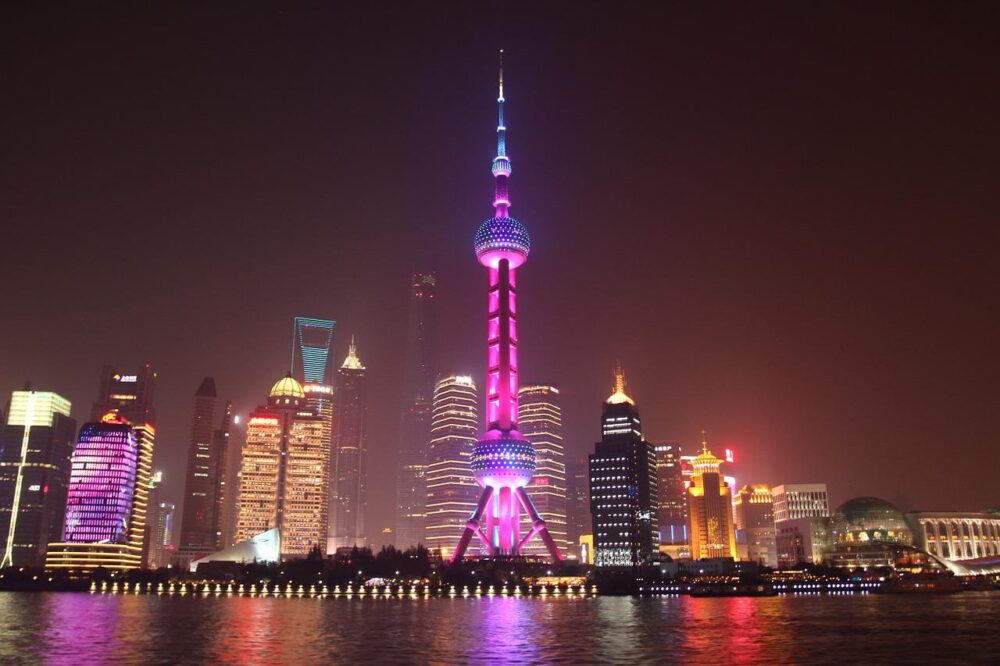In the UK and beyond, we’re surrounded by stunning feats of architecture and engineering. The Shard is one of the most famous modern architectural pieces around and is also the tallest building in the UK.
When compared to structures and skyscrapers across the world though, the Shard seems diminutive in comparison. There’s no doubt that these monoliths are true engineering wonders and inspiration to architects all around the world.
Since Frank Lloyd Wright put forward designs for The Illinois, a mile-high structure proposed to be built in Chicago, architects have been racing to create structures that would reach the fabled height of a mile into the sky. An MIT Technology Review analysis predicted that there’s a 9 per cent chance that a structure taller than a mile will exist by 2050. Truly lofty ambitions.
Here, structural design software innovator Oasys discusses some of the tallest and most impressive skyscrapers across the world, as well as some structures that are in construction and could steal the crown of the most impressive engineering wonder of the world.
The Burj Khalifa (829.9 metres tall)
The current tallest building in the world, the Burj Khalifa dwarfs the structures around it. The 162-floor skyscraper sits in the heart of Dubai, a city known for its impressive architecture. When it was completed, the Burj Khalifa broke a lot of records, including the world’s highest outdoor observation deck, the longest elevator travel distance, and the world’s highest occupied floor.
As well as smashing world records, the Burj Khalifa has been nominated for and won prestigious awards. It wasn’t initially intended to reach its now-famous soaring heights – the building was only planned to be 550 metres tall.
the Burj Khalifa is well-known for its pioneering concrete technology and innovative spire, which comes out of the top of the building. The Y-shaped design is based on Hymenocallis, a desert flower.
The Shanghai Tower (632 metres tall)
The second tallest building in the world, the Shanghai Tower stands head and shoulders above the Shanghai skyline. It also holds the title of the world’s second-highest hotel, with the 84th-110th floors designated as guesthouses.
Utilising modern innovations in engineering, the Shanghai Tower has a concrete core instead of a steel framework. The building uses 980 concrete piles to make it earthquake-proof because it’s located in an area prone to earthquakes. The cylindrical spiralling design of the building makes it aerodynamic too. All of these factors combine to make the Shanghai Tower a truly spectacular engineering feat.

Abraj Al-Bait Clock Tower (601 metres)
Looming over Mecca’s holy mosque, one of the most significant landmarks of Islamic culture, is the Abraj Al-Bait Clock Tower. This creation boasts the world’s largest clock face – each of the four faces is a huge 43 metres in diameter and take over 2 million LED lights to power.
The multi-use structure is designed to cater to the two million worshippers who make the pilgrimage to the holy site every year with hotel accommodation being one of its many functions. Its construction wasn’t without controversy, however; it sits upon what was once an Ottoman fortress, the demolition of which caused protests. It is comprised of a complex of seven free-standing buildings, with the faces of the clock tower lighting up to a luminous green in the dark.
Central Park Tower (472.44 metres tall)
The tallest residential building in the world, the Central Park Tower was completed in 2021 and stands at over 472 metres in the iconic New York skyline. It sits amongst other notable skyscraping accommodation buildings in an area dubbed “Billionaire’s Row” because it is home to these luxury homes.
This impressive feat of engineering is also the tallest building in the Western world, adding another accolade to its name. As well as housing ultra-luxury apartments, the tower is home to a seven-floor Nordstrom store. Its innovative curved glazed façade allows the store to be stunningly illuminated with natural light.
This incredible building dwarfs some of New York’s most famous structures, including the Empire State Building, Chrysler Building, and Rockefeller Centre.
Jeddah Tower (expected to be 1,000 metres tall)
The Burj Khalifa may soon lose its status as the tallest building in the world if the Jeddah Tower is completed according to plan. Construction on this monolith began in 2013, but progress has stalled in recent years due to the pandemic.
The Jeddah Tower is expected to be so tall that it’ll reach into the clouds – imagine getting a bird’s-eye view of the clouds from a room in the tallest building on Earth! As with many of the existing tallest buildings in the world, the Jeddah Tower will be multi-use and include facilities such as hotels, living quarters, and restaurants. The tower represents Saudi Arabia’s goal to diversify its economy and become a tourist hotspot, thus reducing its reliance on oil revenue.
Like the Burj Khalifa, the tower’s one-of-a-kind shape is inspired by a desert plant. Its concrete pile base, which often requires structural design software to be truly effective, reinforces the building and protects it from dangerous weather.
Merdeka PNB 118 (678.9 metres tall)
A futuristic name to match a futuristic design. The Merdeka PNB 118 is still under construction, but the spire of the building was completed in November 2021. The uniquely designed structure is visible in the Malaysian skyline, with full construction expected to be completed by the end of 2022.
As well as its innovative geometric design, the Merdeka PNB 118 has multiple sustainability accreditations to its name – something that’s becoming more important in architectural design as global efforts to halt climate change continue. This stunning feat of structural engineering is proof that sustainable design and construction is not only important, but can also be done without compromising the structure.
Wuhan Greenland Center (expected to be 476 metres)
The Wuhan Greenland Center, which is in the final stages of its construction, is set to be the tallest skyscraper in the city. Originally, the tower was destined to be even taller, set to stand at 636 metres tall. The local government instructed architects to reduce its size by at least 21 per cent in order to prioritise airport safety.
The Wuhan landscape influenced the design of the skyscraper, with the city’s two rivers splitting into three parts providing inspiration. The monolith has been designed with sustainability in mind, with plenty of green credentials under its belt. Its thermodynamic system, which incorporates air-to-air wheels, will draw in exhaust air and use it to fuel the building’s heating system. As well as this, the Wuhan Greenland Center will have efficient plumbing and lighting systems and a mechanism to recover waste water.
Skyscraper designs require genuine innovation to be effective and durable, and it’s safe to say these current and upcoming structures have innovation at their heart. Not to mention they’re some of the most stunning modern buildings in existence. Will we see the Jeddah Tower overtake the Burj Khalifa as the tallest structure in the world in the near future? Will the fabled one-mile-tall building finally become a reality? Only time will tell.








